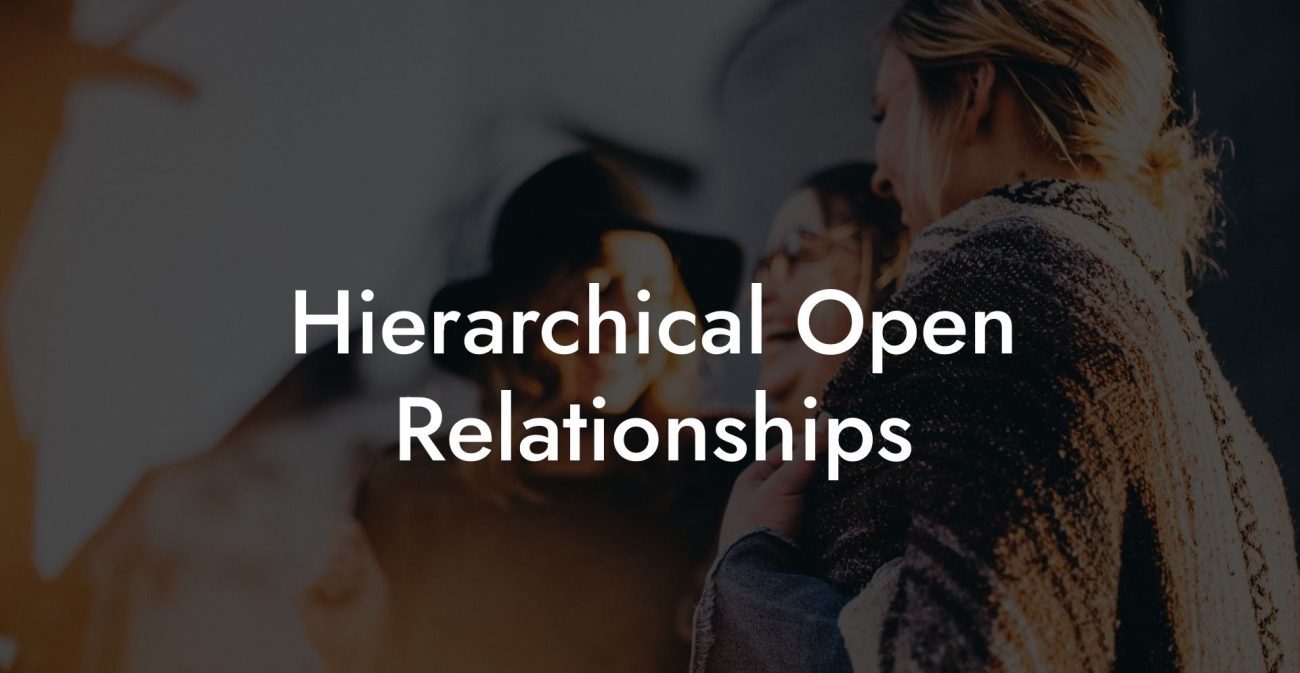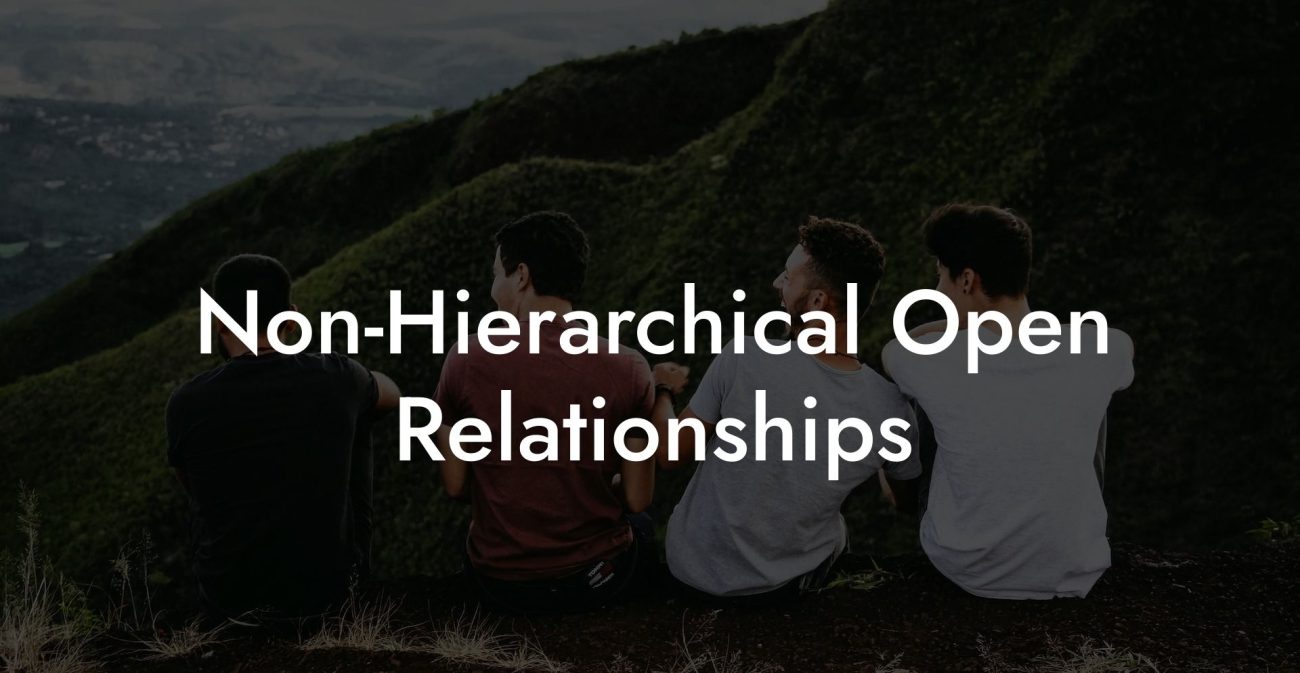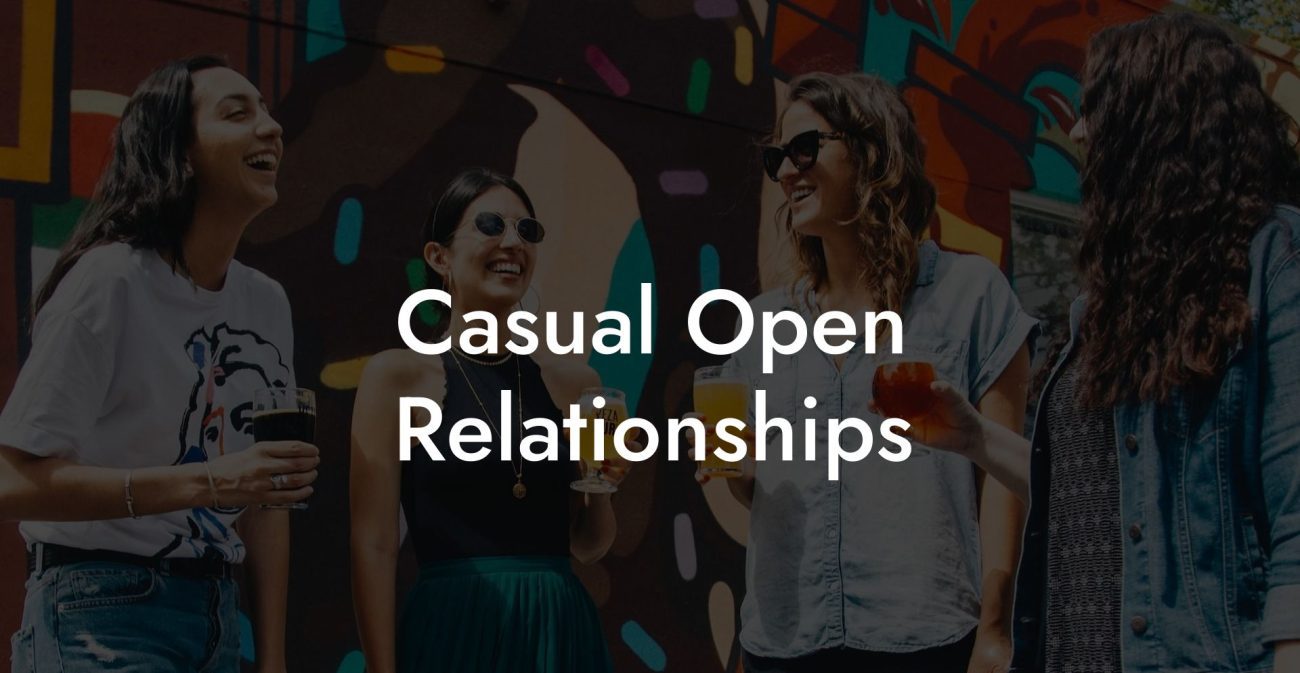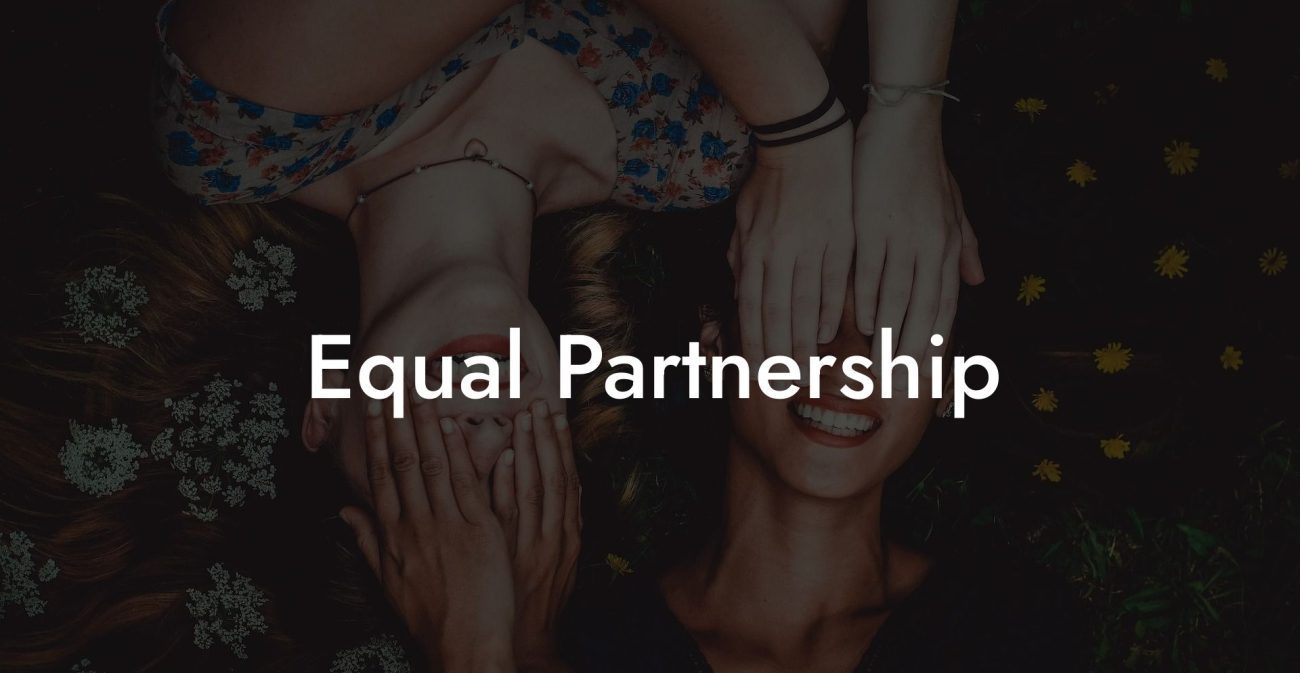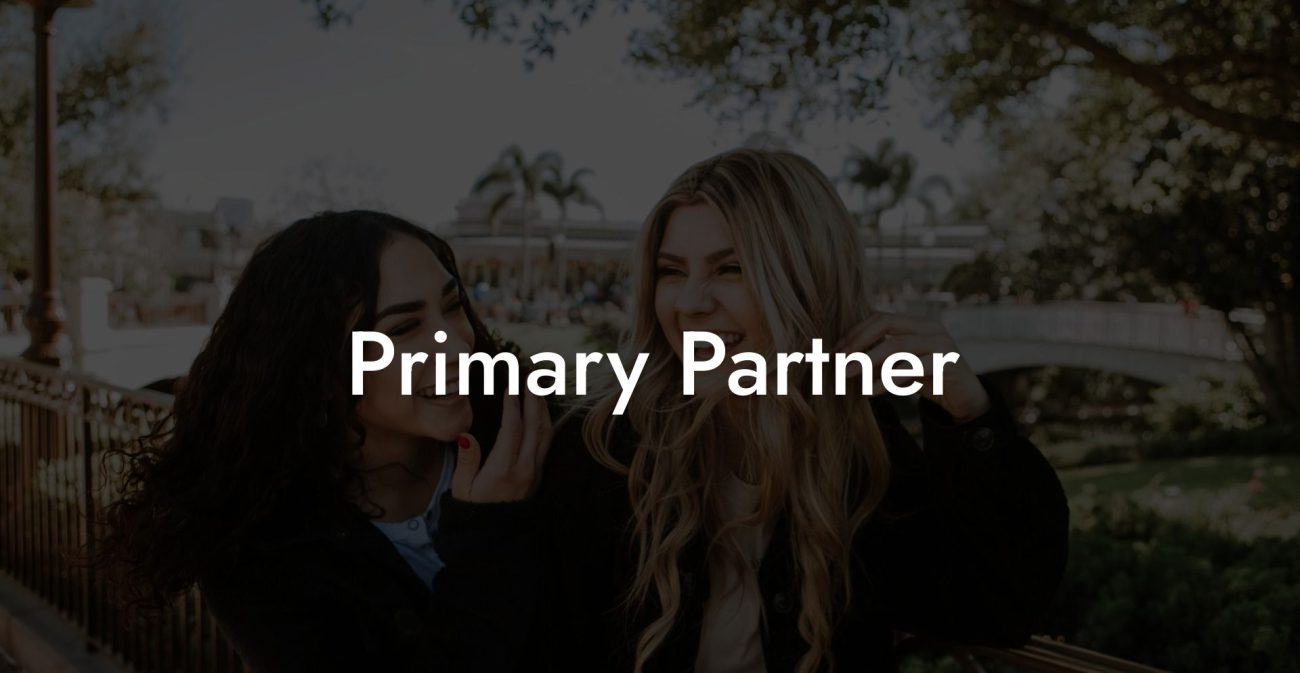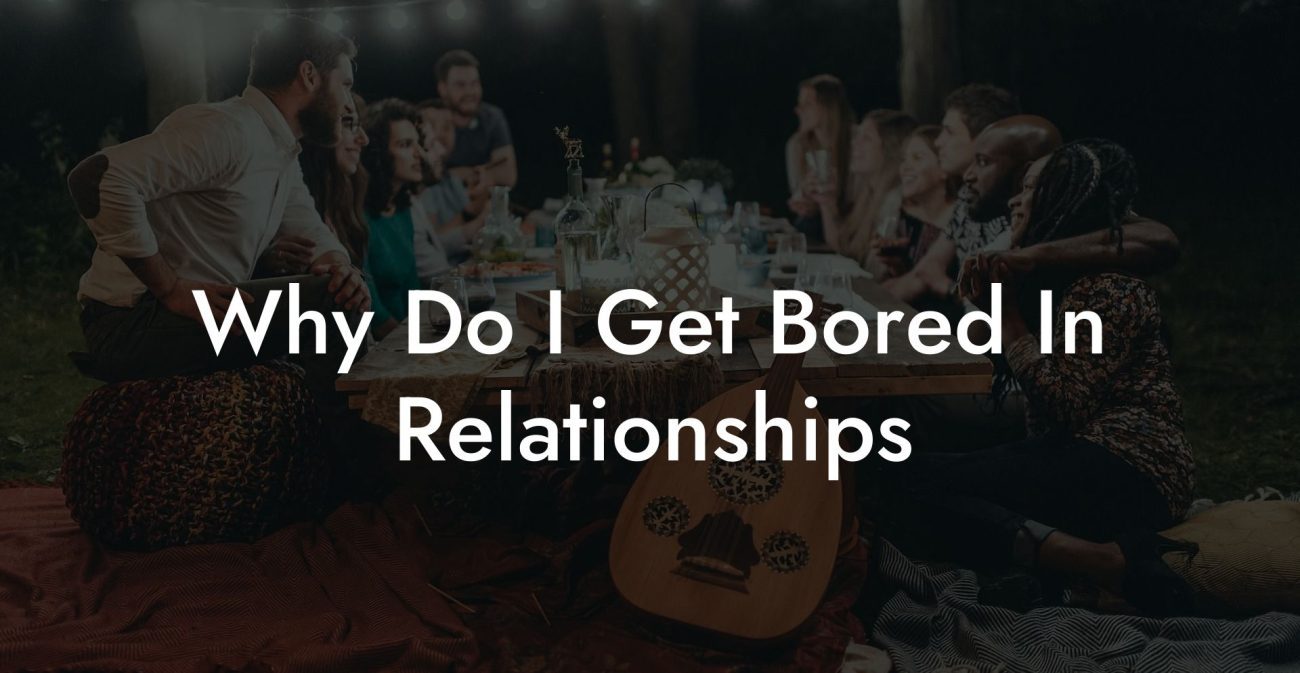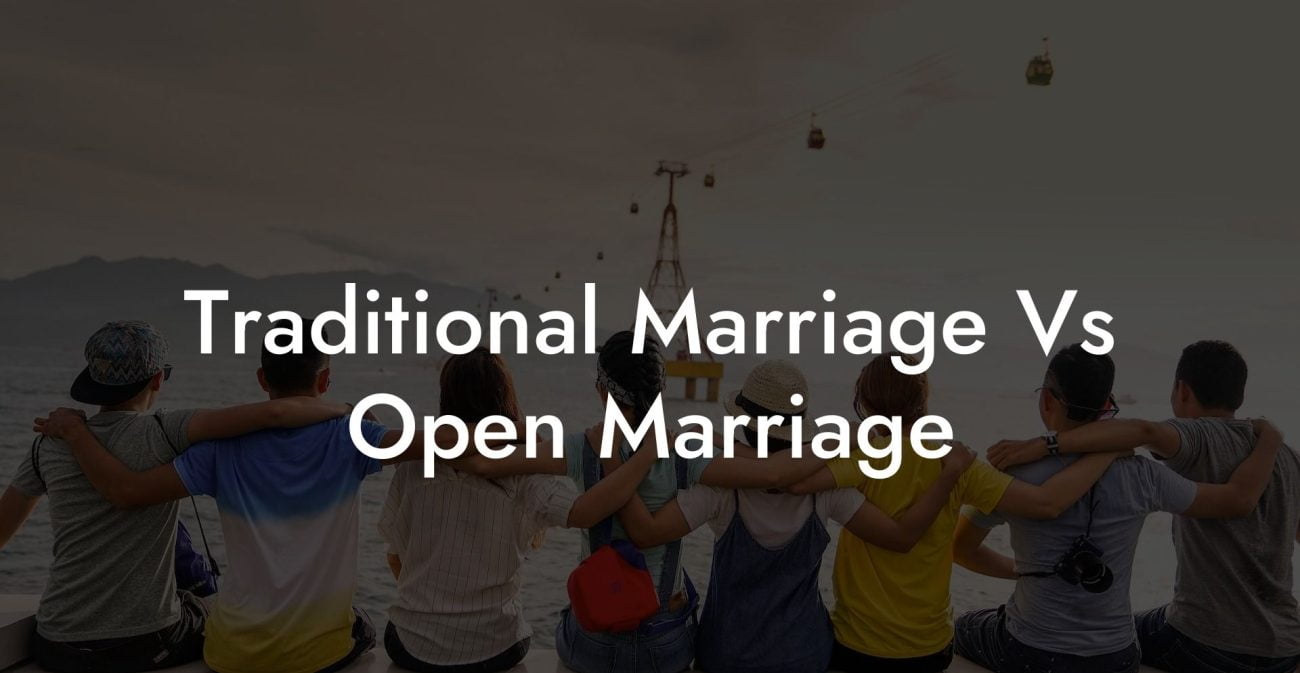Understanding Polyamory And Open Relationships
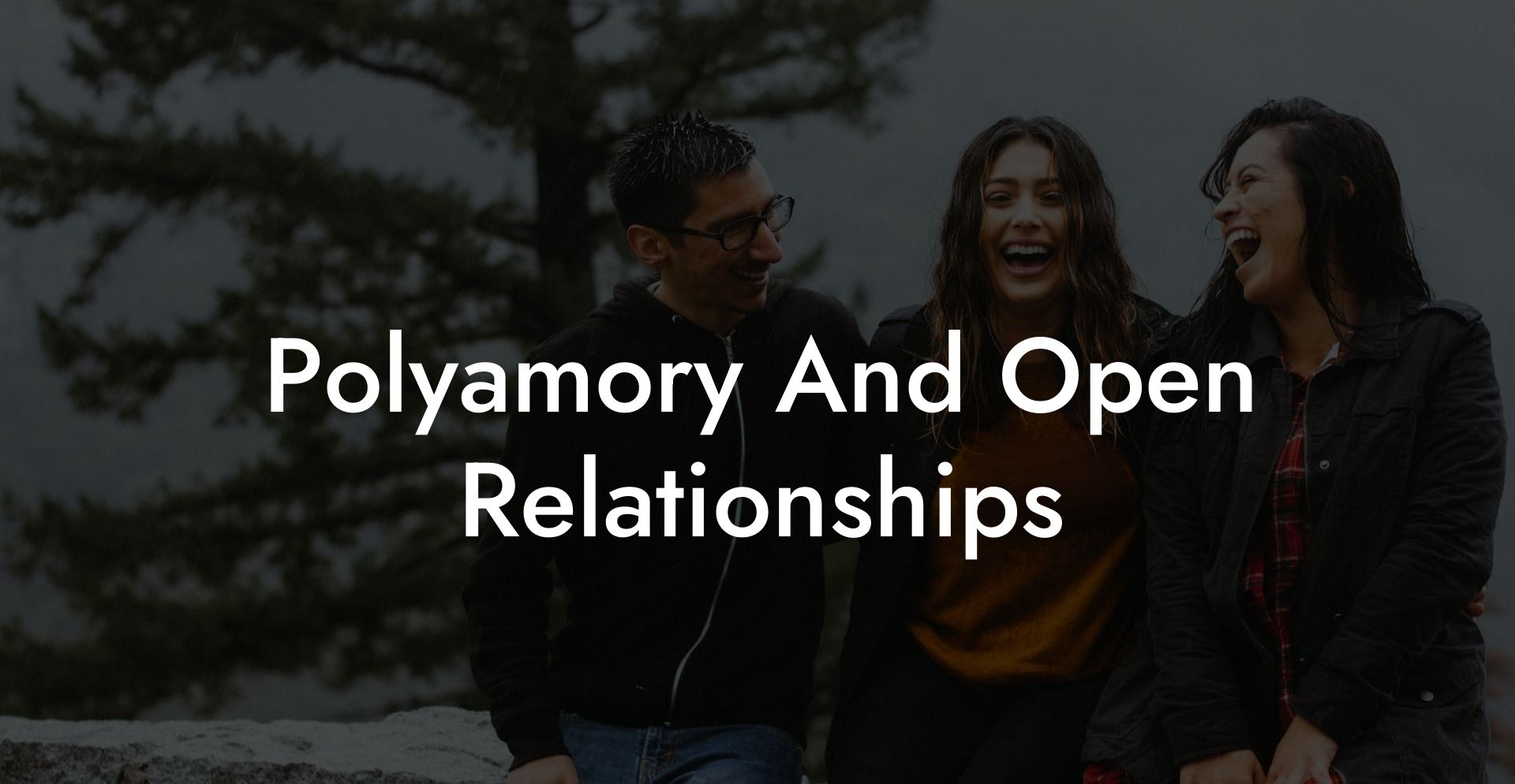
This guide delves into the core concepts of polyamory and open relationships, examining their definitions, similarities, differences, benefits, challenges, and practical strategies for building healthy, ethical, and fulfilling connections. Whether you are new to non-monogamy or a seasoned practitioner looking to deepen your understanding, this resource provides in-depth insights and actionable advice tailored to modern lifestyles.
Quick Links to Useful Sections
- Rethinking Love and Connection
- Understanding Polyamory
- Definition and Core Principles
- Historical and Cultural Perspectives on Polyamory
- Understanding Open Relationships
- Definition and Core Concepts
- Historical and Cultural Context of Open Relationships
- Similarities and Overlaps Between Polyamory and Open Relationships
- Common Ground
- Key Differences Between Polyamory and Open Relationships
- Focus on Emotional Depth vs. Sexual Exploration
- Relationship Structure and Dynamics
- Communication Styles
- Benefits and Challenges
- Benefits of Polyamorous Relationships
- Benefits of Open Relationships
- Challenges in Both Models
- Practical Strategies for Navigating These Relationships
- Enhance Communication
- Set Clear Boundaries
- Prioritize Self-Care and Personal Growth
- Build and Rely on a Support Network
- Frequently Asked Questions (FAQ)
Rethinking Love and Connection
Over the past few decades, societal norms around love and commitment have shifted dramatically. Increasingly, individuals are challenging the idea that romantic and sexual intimacy must be exclusive to one person. Two of the most popular models of consensual non-monogamy are polyamory and open relationships. While these two relationship styles share some common principles, such as the importance of mutual consent, transparent communication, and personal autonomy, they differ in structure and emphasis. In this guide, we explore what polyamory and open relationships mean, how they intersect, and what sets them apart.
For Gen-Z and millennial audiences, these models resonate as they offer alternatives that honor individual growth, flexibility, and the richness of multiple connections. By embracing the idea that love is abundant, many are finding new ways to experience intimacy and fulfillment outside traditional relationship models.
Understanding Polyamory
Definition and Core Principles
Polyamory is a form of consensual non-monogamy where individuals maintain multiple romantic and/or sexual relationships simultaneously, with the full knowledge and consent of everyone involved. The term “polyamory” is derived from the Greek word “poly,” meaning many, and the Latin “amor,” meaning love. Polyamory is based on the idea that love and emotional intimacy are not finite resources, and that multiple meaningful relationships can coexist.
The core principles of polyamory include:
- Consensual Non-Monogamy: Every relationship is formed with full, informed consent from all partners.
- Transparent Communication: Open dialogue is essential for negotiating boundaries, expressing needs, and managing emotions such as jealousy or insecurity.
- Mutual Respect: Each partner’s autonomy, feelings, and boundaries are honored and valued.
- Flexibility: Polyamorous relationships can be organized in various ways, from hierarchical structures with a primary partner to non-hierarchical arrangements where all relationships are considered equal.
- Emotional Depth: Many who practice polyamory seek long-term, emotionally significant bonds, although the nature and intensity of these bonds can vary.
Historical and Cultural Perspectives on Polyamory
Although the term “polyamory” is relatively modern, the practice of maintaining multiple romantic relationships has ancient roots. Throughout history, many cultures have embraced forms of non-monogamy to foster community support, share resources, and allow for diverse emotional bonds. In recent decades, polyamory has gained visibility in Western societies through media, literature, and online communities, challenging traditional notions of exclusivity.
Today, polyamory is celebrated in many progressive communities for its emphasis on ethical non-monogamy, individual autonomy, and open communication. Despite ongoing social stigma in some circles, many individuals find that polyamory offers a fulfilling alternative to conventional monogamous relationships.
Understanding Open Relationships
Definition and Core Concepts
An open relationship is a consensual arrangement in which a couple agrees that one or both partners may have sexual or romantic encounters with others outside of their primary bond. Unlike polyamory, which often focuses on forming multiple emotionally significant relationships, open relationships tend to emphasize the preservation of the primary partnership while allowing for additional, sometimes more casual, external interactions.
Key aspects of open relationships include:
- Mutual Consent: Both partners agree to allow external connections and are aware of each other’s interactions.
- Negotiated Boundaries: Specific rules and limits are set regarding what kinds of interactions are acceptable and how much information is shared.
- Emphasis on the Primary Bond: The central relationship remains the anchor of emotional support and commitment.
- Flexibility in Arrangement: Open relationships can vary widely, from purely sexual encounters to brief romantic liaisons, depending on what the partners agree upon.
Historical and Cultural Context of Open Relationships
Open relationships have been part of human experience in various forms, though they became more prominent in Western culture during the sexual revolution of the 1960s and 1970s. As couples began questioning traditional norms, open relationships emerged as a way to explore sexual freedom and personal expression without ending a committed partnership.
Today, open relationships are often seen as a way to add variety and excitement to a relationship while preserving the emotional security of a primary bond. They are particularly appealing to those who wish to explore sexual or romantic experiences without the expectation of forming deep, long-term connections with external partners.
Similarities and Overlaps Between Polyamory and Open Relationships
Common Ground
Despite their differences, polyamory and open relationships share several fundamental principles:
- Ethical Non-Monogamy: Both models are based on the idea that non-monogamous arrangements can be ethical if all parties provide informed consent.
- Open Communication: Transparent and continuous communication is key in both polyamorous and open relationships, helping partners negotiate boundaries and manage expectations.
- Autonomy: Both approaches emphasize personal freedom and the idea that individuals should have the ability to explore multiple connections.
Key Differences Between Polyamory and Open Relationships
Focus on Emotional Depth vs. Sexual Exploration
Polyamory: Often centers on forming multiple long-term, emotionally rich relationships. The goal is to create a network of supportive, loving bonds where each relationship has its own distinct emotional value.
Open Relationships: Tend to focus more on sexual exploration or casual romantic encounters while maintaining a central, primary relationship. External interactions are often less emotionally involved.
Relationship Structure and Dynamics
Polyamory: Can be structured hierarchically, with one primary partner and several secondary partners, or non-hierarchically, where all relationships are considered equal. The complexity of these arrangements requires nuanced communication and boundary negotiation.
Open Relationships: Typically maintain a clear separation between the primary bond and external encounters. The primary relationship is prioritized, and external interactions are governed by strict, mutually agreed-upon rules.
Communication Styles
Polyamory: Involves multi-directional communication among all partners, which can be complex and time-consuming. The depth of emotional connection often requires more intensive dialogue and regular check-ins.
Open Relationships: Focus on communication between the primary couple about external encounters. While still important, the communication demands may be less intricate than those in a polyamorous network.
Benefits and Challenges
Benefits of Polyamorous Relationships
- Diverse Support Network: Multiple relationships offer varied sources of emotional, intellectual, and practical support.
- Personal Growth: Managing several connections can lead to increased self-awareness, improved communication skills, and greater emotional resilience.
- Flexibility in Meeting Needs: Polyamory allows individuals to experience different types of intimacy that can fulfill various emotional and practical needs.
Benefits of Open Relationships
- Preservation of a Primary Bond: The primary relationship remains the core, providing stability and security, while still allowing for external exploration.
- Sexual Variety: Open relationships offer opportunities for sexual experimentation and variety, which can add excitement to the primary partnership.
- Simplicity: With a clear focus on the primary bond, open relationships may require less complex negotiation compared to multi-partner polyamorous networks.
Challenges in Both Models
- Managing Jealousy: Feelings of jealousy and insecurity can arise in both polyamorous and open relationships, requiring ongoing communication and effective coping strategies.
- Time and Energy Management: Balancing the needs of multiple relationships or external encounters can be demanding and may lead to emotional or physical burnout.
- Social Stigma: Both models may face misunderstanding or prejudice from those who adhere to traditional monogamous norms.
- Legal and Financial Complexities: As most legal systems do not recognize non-monogamous arrangements, issues related to inheritance, custody, and shared finances can be challenging.
Practical Strategies for Navigating These Relationships
Enhance Communication
Open and honest communication is the foundation of both polyamorous and open relationships. Consider implementing the following strategies:
- Regular Check-Ins: Schedule periodic meetings with all partners or as a couple to discuss feelings, boundaries, and any necessary adjustments.
- Active Listening: Practice active listening by giving full attention to your partners’ concerns and validating their feelings.
- Utilize Digital Tools: Use shared calendars and messaging apps to coordinate schedules and maintain transparency about external interactions.
Set Clear Boundaries
Establishing boundaries helps ensure that everyone’s needs are met and that misunderstandings are minimized. Effective boundary-setting includes:
- Defining Acceptable Behaviors: Clearly outline what types of interactions are permitted and what are off-limits.
- Negotiating Time Allocation: Agree on how much time is dedicated to each relationship and how external encounters fit into your overall schedule.
- Regular Reviews: Revisit and adjust boundaries as needed to reflect changes in your relationships or personal growth.
Prioritize Self-Care and Personal Growth
Maintaining your own well-being is essential in any relationship, especially when managing multiple connections. Focus on self-care by:
- Engaging in regular exercise, mindfulness, or meditation practices.
- Pursuing hobbies and activities that promote personal development and relaxation.
- Seeking professional counseling or therapy if needed to manage stress and complex emotions.
Build and Rely on a Support Network
Connecting with like-minded individuals can provide valuable insights and emotional support. Consider:
- Joining online communities and forums dedicated to polyamory, such as r/polyamory.
- Attending local meet-ups, workshops, or webinars focused on ethical non-monogamy and relationship dynamics.
- Building relationships with friends and professionals who understand the challenges and rewards of polyamorous relationships.
Frequently Asked Questions (FAQ)
1. What is polyamory?
Polyamory is the practice of engaging in multiple consensual romantic or sexual relationships simultaneously, with the understanding and agreement of all partners involved.
2. How does polyamory differ from monogamy?
Unlike monogamy, which involves an exclusive bond between two people, polyamory allows for multiple intimate connections, providing a diverse range of emotional and practical support.
3. What are the common types of polyamorous relationships?
Common types include hierarchical polyamory, non-hierarchical polyamory, solo polyamory, polyfidelity, relationship anarchy, and group configurations like triads or quads.
4. What benefits do polyamorous relationships offer?
Polyamorous relationships offer diverse emotional support, opportunities for personal growth, increased flexibility in meeting different needs, and expanded perspectives on intimacy.
5. What challenges might one face in polyamorous relationships?
Challenges can include managing jealousy, balancing time and energy across multiple partners, ensuring effective communication, and dealing with social stigma or legal limitations.
6. How can I improve communication in a polyamorous relationship?
Regular check-ins, active listening, using “I” statements, and leveraging digital tools to coordinate schedules and share updates can significantly enhance communication among partners.
7. Where can I find additional resources on polyamory?
Additional resources include books such as "The Ethical Slut" by Dossie Easton & Janet Hardy and "More Than Two" by Franklin Veaux & Eve Rickert, podcasts like "Multiamory" and "Polyamory Weekly," and online communities like r/polyamory.
Resources and Community Support: Your Next Steps
- "The Ethical Slut" by Dossie Easton & Janet Hardy – A seminal work on ethical non-monogamy that offers insights into building healthy, sustainable polyamorous relationships.
- "More Than Two" by Franklin Veaux & Eve Rickert – An extensive guide that provides practical advice on managing the complexities of multiple relationships.
- Podcasts: Listen to "Multiamory" and "Polyamory Weekly" for engaging discussions and personal experiences about polyamory.
- Online Communities: Join forums such as r/polyamory to exchange ideas, gain support, and share experiences.
- Workshops and Webinars: Attend events focused on relationship psychology and ethical non-monogamy to further your understanding and connect with like-minded individuals.
By exploring these resources and applying the strategies outlined in this guide, you can develop a clear, informed understanding of polyamorous relationships and discover which model best aligns with your values and lifestyle. Embrace continuous learning, open dialogue, and self-reflection as you navigate the diverse and rewarding landscape of consensual non-monogamy.
Lost & confused by all of the terms, types and seemingly made up 3 letter acronyms?? We've got you. Check out our Ethnical Non-Monogamy Dictionary >>
Useful Interruption: Not sure which relationship vibe fits you best? Take our Relationship Test, it’ll give you the real insight into your natural relationship style. Then, dive into our binge-worthy guides (from the tried-and-true to the “wait, that’s a thing?”) and find the perfect relationship type for your life:
- Monogamy
- Open Relationships
- Ethical Non-Monogamy
- Solo Polyamory
- Non-Hierarchical Polyamory
- Hierarchical Polyamory
- Relationship Anarchy
- Swinging
Now back to the main article but yeah take the test...

